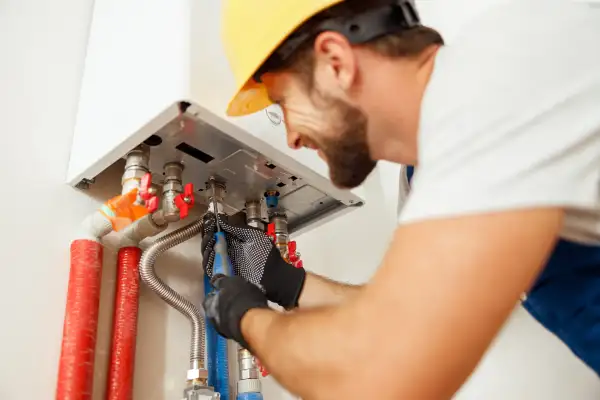Everything You Need To Know About Tankless Water Heater Installation and Replacement

If you’re looking for an efficient, long-lasting, and cost-effective solution for your hot water needs, a tankless water heater may be just what you’re looking for. Tankless water heaters provide hot water on demand and help save energy by eliminating the need to maintain a large quantity of warm water in a tank. But before you make the switch, it’s important to understand the installation process and how to plan for an effective replacement.
In this post, we’ll explain everything you need to know about tankless water heater installation and replacement. We’ll cover the different types of tankless water heaters, the installation process, estimating costs and more. By the end of this post, you’ll have all the information you need to make an informed decision about your water heater needs.
What is a tankless water heater?
A tankless water heater is a type of heating system that does not use a storage tank to store hot water. Instead, it heats up the water as it passes through the pipes and recirculates it back into the home. This system offers many advantages, such as immediate hot water, energy savings, space savings, and a longer lifespan.
Tankless water heater installation
Installing a tankless water heater requires technical knowledge and experience in plumbing and electrical work. Before you install your tankless water heater, you should consult with an experienced professional to determine which parts and accessories are needed for your specific system. It’s also important to read all instructions carefully before beginning installation.
The following steps provide an overview of the installation process:
- Positioning: The unit should be located in an area that is close to the necessary piping connections. This area can be in a small and unobtrusive spot, such as in a pantry, under the stairs, or next to a sink
- Connecting: The gas line and appropriate electrical connections must be made in order for your tankless water heater to function properly. All connections need to be done in compliance with local codes and regulations. If there are any questions or doubts about this step, it’s strongly recommended to consult with a qualified professional for assistance.
- Ventilation: Proper ventilation is essential for safety reasons when installing a tankless water heater. Ventilation requirements may vary depending on the specific model, so it’s important to check the manufacturer's instructions before starting the installation process.
Tips for DIY tankless water heater installation
Although installing a tankless water heater can be done by a qualified DIYer with basic plumbing and electrical skills, this complex project should only be attempted by those who have experience with similar projects. Always read all instructions carefully before beginning any project and follow local codes and regulations when making any electrical or gas connections. If you have any doubts or questions about the process, it’s best to leave it to a professional installer or licensed contractor to ensure the safe operation of your system.
Replacing your tankless water heater
The lifespan of a tankless water heater can vary greatly depending on various factors such as usage levels, maintenance routine and climate conditions. Generally speaking, most systems last an average of 20 years, depending on usage patterns and regular maintenance schedules.
If your system is nearing its end-of-life stage or has stopped working altogether, then it may be time for a replacement installation. During this process, you’ll need to turn off all power sources connected to the unit and disconnect all piping connections before beginning the removal process, ideally with help from an experienced professional. Once removed, they can install your new tankless water heater according to manufacturer instructions using approved materials and equipment.
Maintaining your tankless water heater
Regular maintenance of your tankless water heater can help prolong its lifespan and prevent unnecessary repairs down the road. To keep your system running smoothly and efficiently at all times, make sure that you follow your manufacturer’s recommended maintenance schedule. This includes flushing out sediment build-up every two years as well as regular inspections by qualified professionals for potential problems, including leaks or improper functioning of parts such as thermocouples or gas valves. It’s important to replace worn-out parts immediately if there are signs of wear and tear to minimize repair costs down the road.
Conclusion
When installing or replacing a tankless water heater in your home, it’s important that you understand all the necessary steps involved to make sure that the process goes smoothly without any setbacks or safety risks involved. With proper knowledge of installation processes and regular maintenance practices, you can enjoy the advantages offered by a tankless water heater while minimizing repair costs down the road!